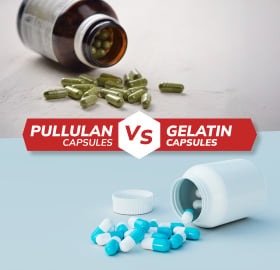Today the global dietary supplements market is huge. In fact, it was estimated to US$164.0 billion in 2022, and is projected to grow at a compound annual growth rate of 9.0% between now and 2030. Have you ever wondered how we got to this point? The history is actually quite interesting!
When were vitamins first discovered?
Here’s a little pop quiz for you: When did the Western world first became aware of the existence and importance of the nutrients that are now known as “vitamins”?
A: 1635
B: 1764
C: 1898
D: 1912
E: 1941
The answer is “D.” Vitamins were first discovered in 1912. At the time the medical community thought that there were only three types of essential nutrients in food: fat, carbohydrates and protein.
How were vitamins first discovered?
In the early twentieth century, poor hygiene and sanitation were assumed to be the root cause of disease. To combat this, scientists believed that the solution was to process food in a way that would sterilize it and get rid of bacteria, mold and toxins.
Unbeknownst to them, all of this processing destroyed the vitamins – and therefore much of the food’s nutritional value. Instead of eliminating disease, it resulted in greater incidence of diseases such as scurvy (from vitamin C deficiency), pellagra (from niacin deficiency) and beriberi (from vitamin B1 deficiency).
It was through the efforts to figure out why the incidence of these diseases were skyrocketing that scientists discovered that food contains additional nutrients. Polish-born biochemist Casimir Funk made the critical discovery in 1912 that four chemical substances – B1, B2, C and D – appeared to be vital to human health. His hypothesis that some diseases were essentially “diseases of deficiency” was a radically new concept at the time. Because Funk thought these newly-discovered substances were all amines, he called them “vital amines.” This was later shortened to “vitamins.”
American biochemist Elmer Vernon McCollum was also heavily involved in research into these newly-discovered nutrients. Working separately, over the next few years Funk and McCollum each discovered and isolated a number of vitamins…discoveries which eventually saved millions of lives.
When did vitamin supplements first become available?
As you might expect, there was a lag time between the discovery of vitamins and their commercial availability.
The first two vitamin supplement products hit the market in 1916: Yeast Vitamon Tablets from Mastin, which were sold directly to consumers, and Metagen from Parke, Davis & Co. (now part of Pfizer), which was only available via prescription. Both made wide claims regarding the health benefits of their products.
Over time more vitamins and nutrients were discovered, and more multivitamin-type products were created. The most common claims regarding these supplements all related to their ability to increase the user’s “vim,” “vigor” or “pep.”
What drove the popularity of dietary supplements?
Some of the major milestones in the evolution of dietary supplements include:
• Ability to synthesize vitamins – For over 20 years, vitamin ingredients were all extracted from food. In the late 1930s methods were developed that enabled manufacturers to synthesize vitamins in a lab. This drastically reduced costs, making dietary supplements affordable for a much broader portion of the population. For example, the consumer price of thiamine (vitamin B1) plummeted from $300 per gram in 1935 to $7.50 per gram in 1937 and $0.53 per gram in 1942!
• Government focus on nutrition – In the 1940s, in response to the health conditions of one-third of the men called up for military service during World War II, President Roosevelt called on the government to focus on better nutrition. The result was the country’s first government-sponsored Recommended Dietary Allowances (RDAs) guidelines, which addressed six vitamins and two minerals.
• Introduction of One-A-Day supplements – In response to these guidelines, the first “once daily” multivitamin supplement was introduced in 1943.
• Incorporation into the American diet – By the 1950s and 1960s, vitamins were sold in bottles designed to be kept on the kitchen table, to make it convenient for family members to ingest these supplements with meals. During these years chewable vitamins in “fun” shapes and palatable flavors became popular for children.
• Candy-like gummy format – In the 2010s brands began targeting adults with gummy vitamins, which rapidly took off in popularity. However, because gummies usually contain a great deal of sugar (as much as the equivalent of two teaspoons per dose), many doctors and dentists find this trend alarming.
Why are vitamins in capsules?
Today vitamins and other nutritional supplements are available in a wide variety of formats, including capsules, softgels, tablets, powders, liquids and gummies, as well as in functional foods.
From the formulation standpoint, when choosing a dosage format supplement manufacturers must consider a variety of factors related to the active ingredients of the formulation as well as how the supplement will affect the body.
Capsules use a smooth, hard casing to enclose active ingredients and protect them from contamination. Today many supplements are in capsules because capsules offer a number of advantages over other dosing formats. This includes:
• Easier to swallow, due to their smoothness
• Ability to mask unpleasant tastes and odors
• Quicker release time in the body as compared to tablets
• Generally easier on the stomach
• Do not require binders, coatings, disintegrants and other inactive ingredients to be added to the formulation or the capsule itself
From the consumer’s standpoint, “ease of swallowing” is particularly important. A survey completed by the Council for Responsible Nutrition found that 49% of participants cited ease of swallowing as their top decision criterion when choosing a supplement form.
What are some of the trends in today’s dietary supplements market?
Current trends include:
• “Clean labels” movement – Capsule products such as CapsCanada’s K-CAPS® made with natural colorants are designed to support brands’ “clean label” claims. These vegetarian capsules are Vegan Registered with the Vegan Society, Kosher and Halal Certified, and free of synthetic coloring, titanium dioxide, preservatives, starches and common allergens.
• Huge growth in the beauty supplements market – Many consumers want sustainable beauty and are attracted to supplements that will create “beauty from within.”
• Market opportunities for eSports supplements – Both professional and casual gamers are looking for dietary supplements that will help them perform at their peak.
• Generation-driven demands – Many nutritional supplement makers are finding that it pays to cater to the changing attitudes and needs of each generation.
Conclusion
As the dietary supplements market continues to evolve, CapsCanada is staying at the forefront of innovation. Count on us to continue to develop the capsule technology you need – such as our new delayed-release K-CAPS® HPMC capsules – to stay at the forefront of the market, too.















